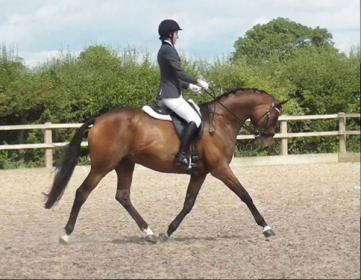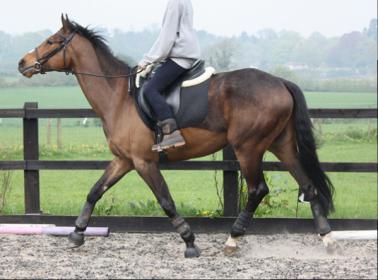Thank you all for the great advice!
AJ—your guy is lovely!!! He looks very similar to the mare I’m going to take a look at tomorrow. My trainer is going with me, and we have several that we are going to take a look at. I have lots of time to find my next partner…I’m not rushing. My Arab mare is 17, and she is going strong. I would like to find something by the end of the year that I can start to develop now before I will need to retire or back down the work with my mare.
My Arab mare was definitely not built for dressage, but with a lot of hard work, she is doing quite well…so, I’m not afraid of a project or taking the time to work with and build a horse up correctly. I have never felt more fulfilment than seeing the progress my current mare has made. It’s amazing what patience and correct riding can do, and I’m anxious to transfer what I have learned from her, to my next horse. I’ve owned her since she was a 2 year old, so developing a horse is not a new project for me, and I have two fantastic trainers that are able and willing to help.
Also, I know not all WBs are “too quiet”. I take each horse as an individual. However, I’m in a barn with quiet a few upper level WBs, and as much as I love their personalities and I’m amazed at their talent…every single one of them has had some sort of health issue…stemming from really bad feet, to eye issues, to suspensory issues, etc. I’m wanting something a bit more hardy. If I could afford a WB cross it would be an Arab/WB or TB/WB. However, most around here are priced way out of my price range. I also like the idea of finding that diamond in the rough. I’m not looking to go to the Olympics, I just want something suitable that I connect well with and can have some fun while progressing up the levels a bit.
JLeegriffith—thank you for the photo, that is a great reference. I am not as concerned about the neck and weight as I am the hocks, shoulder and topline. Having a very weak-backed horse, it’s a lot of work to build the bridge from the back to front…I would rather not have to start out that way.
The mare I’m looking at tomorrow, from the pictures, has a very lovely neck and nice hind-end and a very nice topline. Her conformation as a rescue is already better than my mare’s that has been in full-work for many years. She has never been raced, so I suspect, she was initially trained and determined to be too slow for the track, then bred for a few years. According to my trainer who has already been out to see her. She has great feet and while she is under weight, has a calm and sweet disposition. She is currently with a great lady who does TB rescue here locally. I’m anxious to get a good look at her tomorrow.
Overall, I like the breed. A lot of my concerns have been fully answered. 






